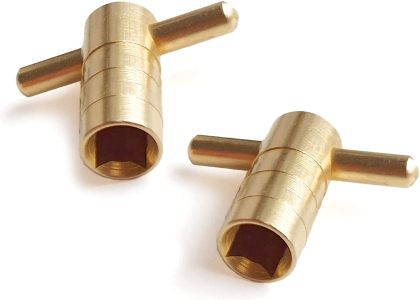Bleeding a Radiator is a simple home maintenance job, but is still one which needs to be done correctly for the best results. The easiest way to tell if a radiator needs bleeding is by touch. A radiator that feels cold at the top, whilst warm at the bottom has air in it and must be bled.
When bleeding a radiator, hold a jug or cup underneath the valve to catch any water that leaks out. If you cannot fit a jug or cup underneath the valve, hold an old cloth or towel under it to catch any water that escapes. It is a good idea to turn off the Central Heating whilst you bleed any radiators which need it. If you do not, you risk more air being drawn into the system.
How Air Gets into the Radiator
Small amounts of air will leak into any central heating system each time water enters the system. The action of the pump will also create air bubbles which will build up over time. The air will then naturally fill the highest parts of the system, which are usually the top of radiators. There is very little you can do to stop this happening and even fairly new central heating systems should be bled regularly.
Bleeding a Radiator
All radiators have a valve at the top with a small square shaft in the middle. Using a radiator key, which can be bought cheaply from any DIY store, you need to turn the square shaft slowly until air starts to seep out. If you place one hand on the radiator you will be able to feel the heat rising up the radiator. As soon as the water starts to leak out of the radiator, use a key to tighten the valve. Keep the key in the valve at all times, and do not remove the shaft completely or black water will spill out of the hole.
If you have a sealed system, you should check the pressure after bleeding and top up the pressure if required.
Bleeding a Radiator Without a Key
If you do not have a Radiator Key, it is sometimes still possible to bleed the radiator. Take a look at the end of the square shaft and check if it has a slot cut into the end of it. If so, you can use a screwdriver to carefully turn the shaft and open the valve, instead of using a Radiator Key.
If there is no slot at the end of the square shaft, it is better to wait and buy a radiator key than to try to force the valve open using a tool that isn’t designed for the job.





